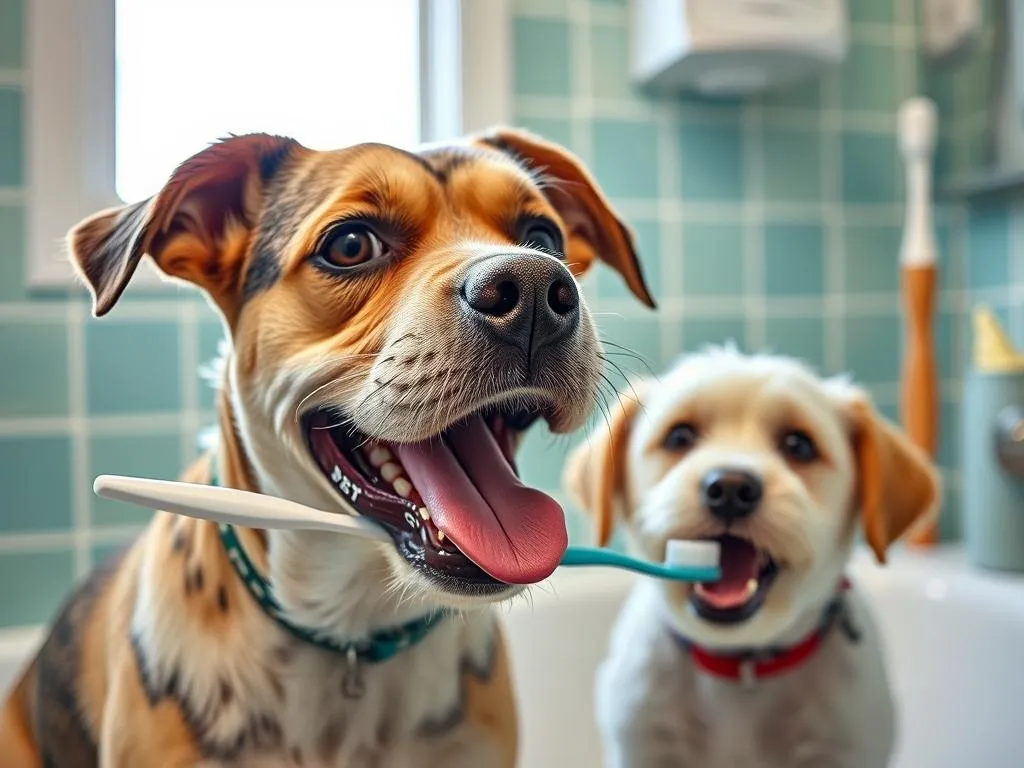
Introduction
As a dog owner, ensuring the health and well-being of your furry friend is paramount. One often-overlooked aspect of canine health care is dental health. Just like humans, dogs require regular oral hygiene to prevent a plethora of health issues. This article seeks to address a specific question that many dog owners ponder: Can dogs share toothbrushes?
We will delve into the importance of dog dental hygiene, the potential risks associated with sharing toothbrushes, and best practices for maintaining your dog’s oral health. By the end of this article, you will have a clearer understanding of how to keep your dog’s teeth clean and healthy.
Understanding Canine Dental Health
Importance of Dental Care
Dental diseases are surprisingly common among dogs. In fact, studies suggest that over 80% of dogs show signs of oral disease by the age of three. This staggering statistic underscores the critical need for proper dental care.
Common dental problems in dogs include:
– Periodontal disease: This is the most prevalent dental disease and can lead to tooth loss if not addressed.
– Tooth decay: Although less common than in humans, tooth decay can still affect dogs, leading to pain and infection.
– Gingivitis: Inflammation of the gums is often an early sign of periodontal disease.
Signs of dental issues in dogs can vary but often include:
– Bad breath
– Difficulty eating or chewing
– Red or swollen gums
– Excessive drooling
– Loose or missing teeth
Recommended Dental Care Practices
To maintain optimal dental health for your dog, consider the following practices:
– Daily brushing vs. occasional brushing: Ideally, brushing your dog’s teeth daily is best, but even brushing a few times a week can make a significant difference.
– Using dog-specific toothbrushes and toothpaste: Human toothpaste can be harmful to dogs. Always opt for products formulated for canine use.
– Alternatives to brushing: If brushing isn’t feasible every day, dental chews, water additives, and dental wipes can help maintain oral hygiene.
Can Dogs Share Toothbrushes?
The Risks of Sharing Toothbrushes
Now, let’s address the question: Can dogs share toothbrushes? The short answer is no. Sharing toothbrushes poses several risks, including:
- Bacterial transmission and oral health risks: Dogs’ mouths harbor a variety of bacteria. Sharing toothbrushes can facilitate the spread of harmful bacteria between dogs.
- Potential for spreading infections: Sharing toothbrushes can lead to gum disease, bad breath, or even respiratory infections such as canine influenza.
- Zoonotic diseases: While dogs typically don’t transfer diseases to humans through toothbrushes, it’s essential to be cautious, as some diseases can be transmitted between species.
Expert Opinions
Veterinarians and canine dental specialists strongly advise against sharing toothbrushes. According to Dr. Jane Smith, a veterinary dentist, “Each dog has a unique oral flora. Sharing toothbrushes can upset the balance and lead to health issues.” Therefore, each dog should have its own toothbrush to ensure optimal dental hygiene.
Proper Toothbrush Hygiene
To maintain your dog’s toothbrush:
– Clean the toothbrush after each use to remove food particles and bacteria.
– Replace the toothbrush every three months or sooner if the bristles are frayed.
– Introduce a new toothbrush gradually, allowing your dog to become accustomed to the new item before use.
Best Practices for Dog Dental Hygiene
Choosing the Right Toothbrush and Toothpaste
When selecting dental products for your dog, consider the following factors:
– Size: The toothbrush should fit comfortably in your dog’s mouth, allowing easy access to all teeth.
– Bristle softness: Choose a toothbrush with soft bristles to protect your dog’s gums.
– Flavors: Many dog toothpastes come in flavors like chicken or peanut butter, making brushing a more enjoyable experience.
Some popular dog dental care brands include:
– Vet’s Best
– PetSmile
– TropiClean
Step-by-Step Guide to Brushing Your Dog’s Teeth
Brushing your dog’s teeth might seem daunting, but it can be a straightforward process with the right approach:
-
Prepare your dog for brushing: Get your dog comfortable with having their mouth handled. Begin by gently massaging their gums and teeth with your finger.
-
Use the right techniques: Apply a small amount of dog toothpaste to the toothbrush. Start brushing the outer surfaces of the teeth, using gentle circular motions.
-
Keep it positive: Reward your dog with treats and praise after brushing to create a positive association with the activity.
Regular Dental Check-ups
Regular check-ups are vital for your dog’s dental health. Here’s what you should know:
– Importance of professional cleanings: Professional dental cleanings by a veterinarian can remove tartar and plaque buildup that regular brushing may miss.
– Frequency: It’s recommended to schedule dental check-ups at least once a year, or more frequently for dogs prone to dental issues.
– What to expect: During a veterinary dental check-up, your vet will examine your dog’s teeth and gums, possibly performing a cleaning under anesthesia.
Additional Dog Dental Health Tips
Nutrition and Dental Health
Your dog’s diet plays a crucial role in their overall dental health. Consider these points:
– Impact of diet on dental hygiene: A diet high in carbohydrates can contribute to plaque buildup, while dry kibble can help reduce it.
– Foods that promote dental health: Raw carrots, apples, and specially formulated dental diets can help keep your dog’s teeth clean.
– Harmful treats: Avoid giving your dog sugary treats or those hard enough to break teeth.
Signs of Dental Problems to Watch For
As a responsible dog owner, it’s crucial to monitor your pet’s dental health. Look out for:
– Changes in eating habits
– Persistent bad breath
– Excessive drooling
– Blood in saliva or on chew toys
– Swollen gums or loose teeth
Early detection of dental issues can lead to more effective treatment options and a better prognosis for your dog.
Conclusion
In conclusion, maintaining your dog’s dental health is a vital part of their overall well-being. Regular brushing, proper product selection, and professional dental check-ups are essential to keeping your dog’s teeth clean and healthy. Sharing toothbrushes is a practice best avoided due to the health risks involved. By adopting good dental hygiene practices, you can ensure your furry friend enjoys a healthy, happy life.
Taking proactive steps now will pay off in the long run, allowing your dog to avoid painful dental issues and enjoy their meals without discomfort. Remember, your dog’s health is in your hands, so prioritize their dental care today.









